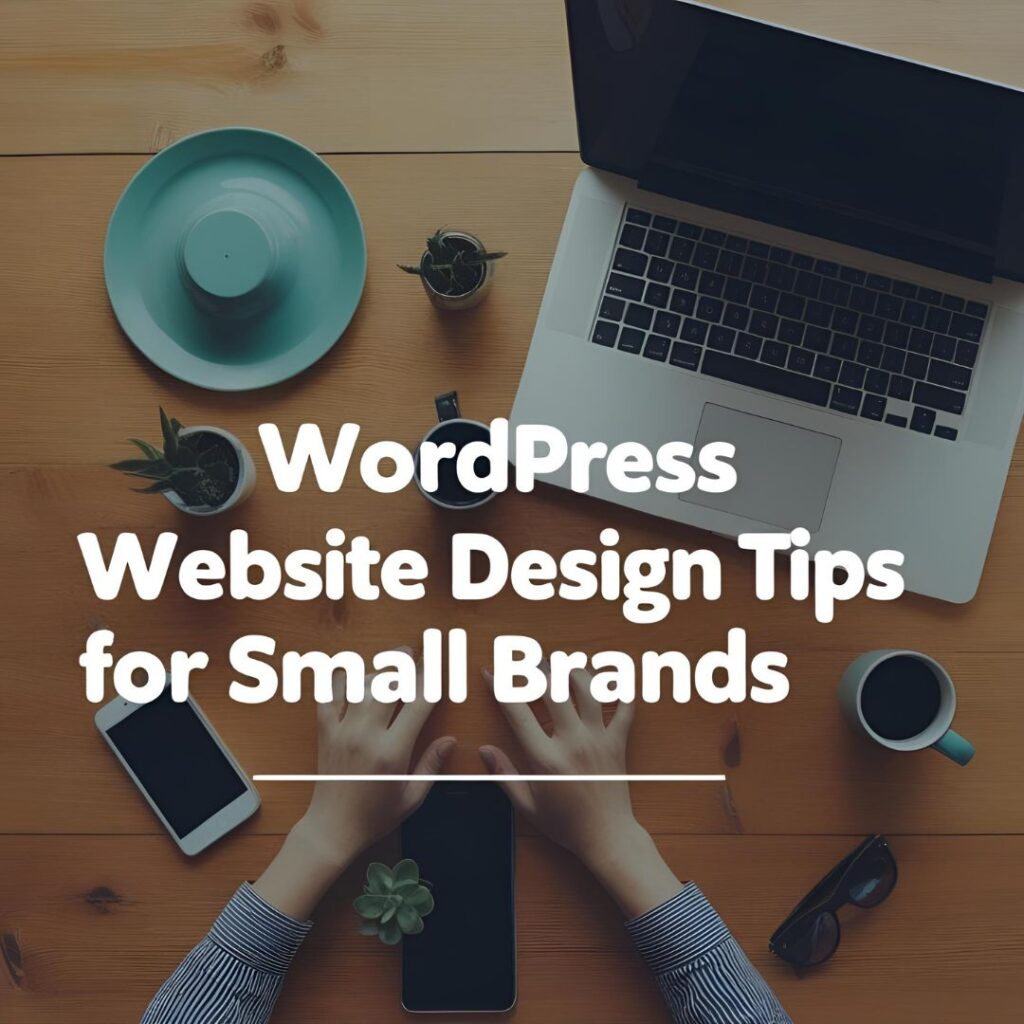
Create a website that’s not just beautiful—but built to convert.
Let’s be real: having a great product or service is important, but if your website looks outdated, loads slowly, or confuses visitors… you’re losing potential business.
The good news? You don’t need a massive budget to build a powerful online presence. With WordPress, smart design choices, and a little SEO magic, you can create a website that makes a great first impression and gets results.
Here are essential WordPress website design tips every small brand should know.
1. Know Your Brand (Before You Touch the Design)
Before diving into WordPress themes and plugins, ask yourself:
- What does my brand stand for?
- Who am I trying to attract?
- What feeling should my website give?
Your fonts, colors, logo, and even the images you choose should reflect your brand’s identity. Whether you’re cozy and handcrafted or bold and modern, consistency is key.
➡️ Pro Tip: Use the same brand colors on your website, social media, and email templates for a cohesive look.
2. Choose a Theme That’s Fast, Responsive, and SEO-Friendly
Don’t just pick a theme because it looks pretty. Pick one that performs.
Look for:
- Lightweight structure (Astra, Kadence, GeneratePress are great picks)
- Mobile responsiveness (over 60% of users browse on phones!)
- SEO optimization (clean code, schema-ready, supports Gutenberg)
Remember: A slow or unresponsive site = high bounce rate = lower rankings.
➡️ Pro Tip: Use Google’s PageSpeed Insights to check performance before you publish.
3. Keep Navigation Simple and Intuitive
Your website should be easy to navigate—for both people and search engines.
Stick to:
- 5–7 top-level menu items
- Descriptive page names (like “About,” “Services,” “Shop”)
- A clear CTA in the header (like “Book Now” or “Free Quote”)
The goal? Make it easy for users to get what they need—fast.
➡️ Pro Tip: Add internal links between pages (and blog posts!) to boost SEO and keep users engaged.
4. Build for Mobile First
More than half of your traffic is likely coming from mobile. So if your site only looks good on desktop, you’re losing leads.
Make sure:
- Fonts are readable on small screens
- Buttons are large enough to tap
- Images scale properly without slowing the page
Google also prioritizes mobile usability in its rankings, so this is non-negotiable.
➡️ Pro Tip: Test your site on real devices, not just a simulator.
5. Use Clear, Action-Driven CTAs
Every page should have a goal—whether it’s to book a service, sign up, or contact you.
Make it easy with:
- Contrasting CTA buttons
- Actionable phrases (like “Get Your Free Quote” or “Let’s Work Together”)
- CTAs placed at the top, middle, and end of the page
A good CTA can turn a visitor into a paying customer.
➡️ Pro Tip: Use heatmaps (like Hotjar) to see where people are clicking.
6. Content First, Then Design
Design gets attention. But content builds trust.
Don’t overload your homepage with design effects. Focus on:
- Clear headlines
- Benefit-focused copy (how you help the customer)
- Testimonials, social proof, or reviews
- Internal links to blog posts or services
➡️ Pro Tip: Use the Yoast plugin to make sure your content is readable, keyword-rich, and SEO-optimized.
7. Optimize Your Images
High-res images look great—but they can slow your site down.
Here’s what to do:
- Compress every image using tools like TinyPNG or ShortPixel
- Use WebP format when possible
- Add descriptive alt text (great for SEO and accessibility)
➡️ Pro Tip: Include your focus keyword in one image alt text (naturally).
8. Install Only What You Need (Plugins)
Plugins can be powerful—but too many will slow you down or cause conflicts.
Stick with essentials:
- Yoast SEO (for on-page SEO)
- WPForms (contact forms)
- Smush (image optimization)
- Elementor or Gutenberg (for visual page design)
- WP Rocket (speed & caching)
➡️ Pro Tip: Audit your plugins every few months and remove what you don’t use.
9. Secure Your Website (Trust is Everything)
Even small brands get targeted. Protect your site and your visitors.
Must-haves:
- An SSL certificate (HTTPS is a ranking factor!)
- Security plugin like Wordfence or iThemes Security
- Backup solution like UpdraftPlus
➡️ Pro Tip: Set up Google Search Console to monitor indexing and site health.
10. Design With SEO in Mind
Design without SEO is like building a store with no roads leading to it.
Make sure:
- Every page has one focus keyword
- Titles and meta descriptions are filled in (use Yoast!)
- Heading structure is correct (H1 for titles, H2/H3 for sections)
- Schema markup is enabled (especially for services or FAQs)
➡️ Pro Tip: Use the green lights in Yoast as your guide—but write for humans first.
Final Thoughts: Build Smart, Not Complicated
You don’t need to be a designer or developer to create a WordPress website that works. You just need to focus on what matters most:
- User experience
- Mobile-friendliness
- Clear branding
- Great content
- SEO from the start
Small brands can compete with big players—when their website is built right.
Ready to Level Up Your Website?
We build custom WordPress websites for small brands that want to stand out, grow fast, and make a lasting impact. Let’s talk about your vision.
